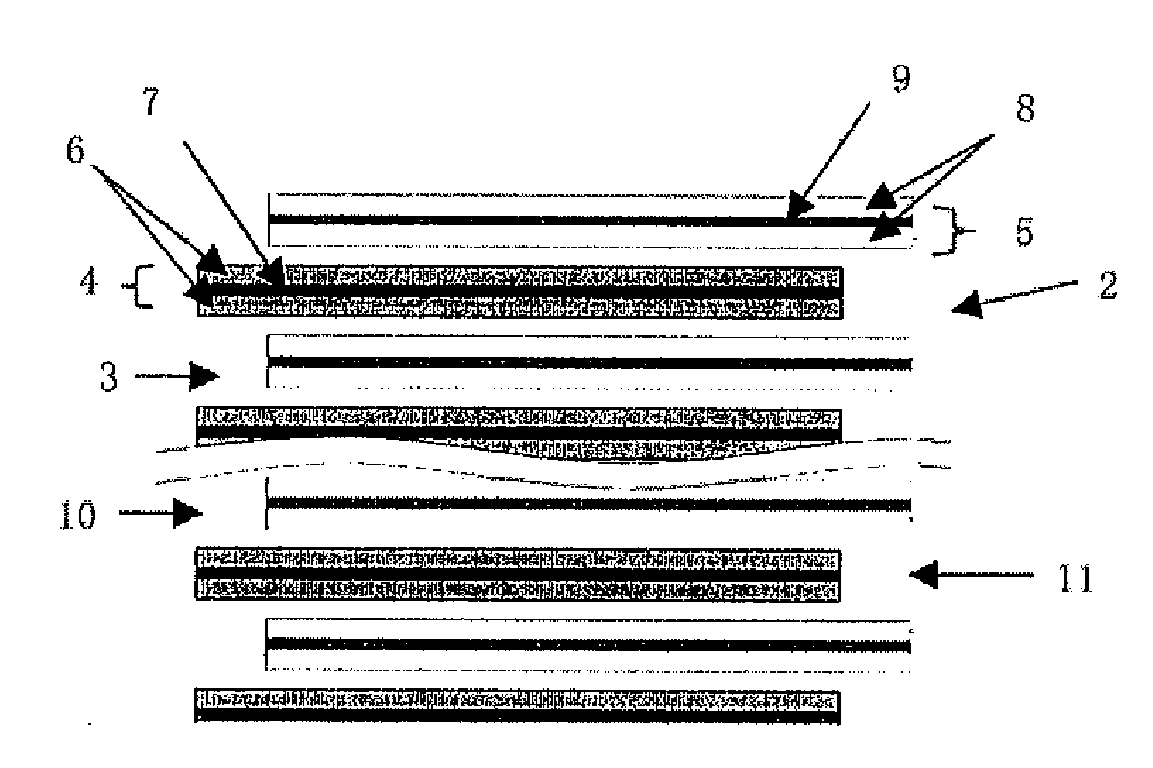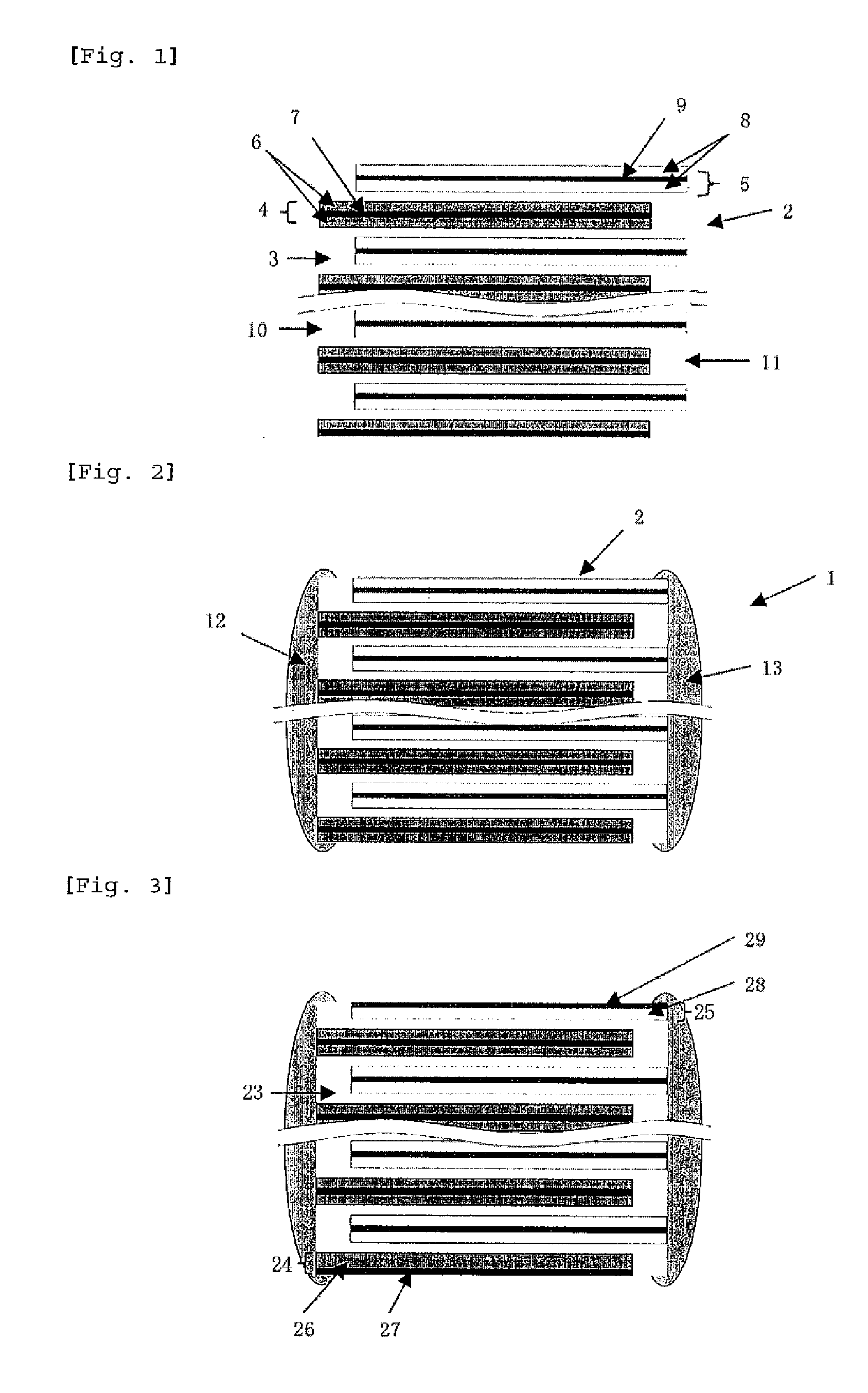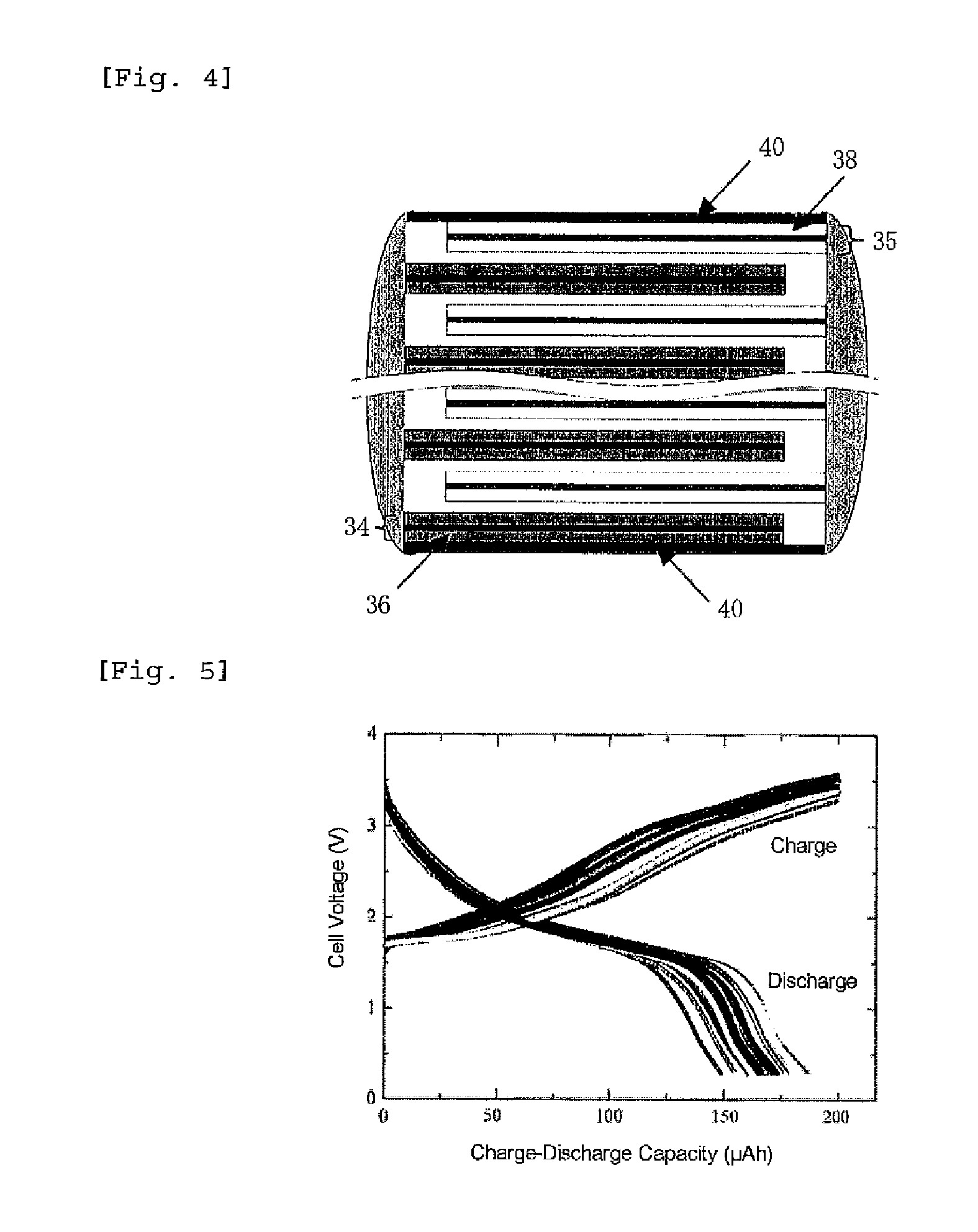All solid state secondary battery
a solid-state secondary battery, all-in-one technology, applied in the direction of cell components, final product manufacturing, sustainable manufacturing/processing, etc., can solve the problems of high risk of fire, high cost, and high cost of solid-state batteries, and achieve excellent efficiency in the point of efficiency, simple and easy, without requiring a long time
- Summary
- Abstract
- Description
- Claims
- Application Information
AI Technical Summary
Benefits of technology
Problems solved by technology
Method used
Image
Examples
example 1
Preparation of Positive-Electrode Paste
[0079]As the positive active material, LiMn2O4 prepared by the following method was used.
[0080]Li2CO3 and MnCO3 were used as starting materials, and they were weighed with a molar ratio of 1:4, subjected to wet mixing by a ball mill using water as a dispersing medium for 16 hours, and then, dehydrated and dried. The obtained powder was calcined in air at 800° C. for 2 hours. The calcined product was roughly pulverized, subjected to wet mixing by a ball mill using water as a dispersing medium for 16 hours, and then, dehydrated and dried to obtain calcined powder of a positive active material. An average particle diameter of the calcined powder was 0.30 μm. Also, the composition is to be LiMn2O4 was confirmed by using an X-ray diffraction device.
[0081]As a positive-electrode paste, to 100 parts of the calcined powder of a positive active material were added 15 parts of ethyl cellulose as a binder and 65 parts of dihydroterpineol as a solvent, and...
example 2
[0099]In the same manner as in Example 1 except for changing the calcination temperature to a temperature as shown in Table 1, the positive active material, the negative active material and the calcined powder of an ion-conductive inorganic-material were obtained. With regard to each calcined powder, a linear shrinkage rate was measured as follows. The results are shown in Table 1.
(1) Powder which is an object to be measured was pressed with 0.5 t / cm2 [49 MPa] to prepare a test piece with a thickness of 0.8 to 1.2 mm, and cut to prepare a test piece having a length of 1.5 mm, a width of 1.5 mm and a thick-ness of 0.8 to 1.2 mm.
(2) By using a thermal analyzer (manufactured by MacScience Co., Ltd.), change in thickness after heating to a pre-determined temperature was measured while applying a load of 0.44 g / mm2 to the test piece according to the thermo-mechanical analysis method.
(3) The measured value was substituted to the following equation to obtain a linear shrinkage rate.
Linears...
PUM
| Property | Measurement | Unit |
|---|---|---|
| Temperature | aaaaa | aaaaa |
| Temperature | aaaaa | aaaaa |
| Temperature | aaaaa | aaaaa |
Abstract
Description
Claims
Application Information
 Login to View More
Login to View More - R&D
- Intellectual Property
- Life Sciences
- Materials
- Tech Scout
- Unparalleled Data Quality
- Higher Quality Content
- 60% Fewer Hallucinations
Browse by: Latest US Patents, China's latest patents, Technical Efficacy Thesaurus, Application Domain, Technology Topic, Popular Technical Reports.
© 2025 PatSnap. All rights reserved.Legal|Privacy policy|Modern Slavery Act Transparency Statement|Sitemap|About US| Contact US: help@patsnap.com



